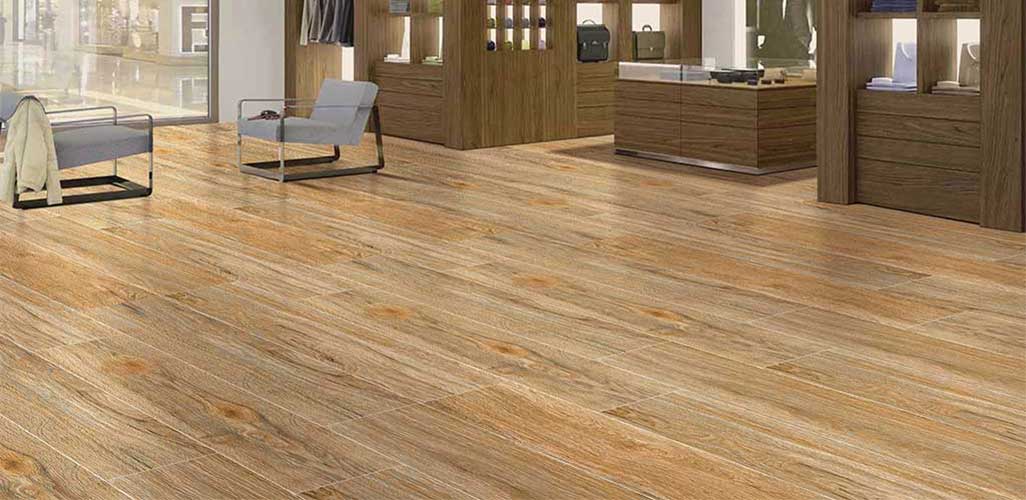This puzzles me - Im installing the classic 34 tongue and groove hardwood flooring and it gets nailed down through the groove with flooring nails every 12-18. Expansion gaps are spaces left around the perimeter of rooms against fixed objects such as columns thresholds hearths baseboard and other stationary items built or secured into the framing structure of the home. What is the expansion gap for hardwood floors.
What Is The Expansion Gap For Hardwood Floors, Then my 2nd question is. To fill the gaps successfully cut them to size and apply some wood glue to the edges. My first question is a 34 expansion gap sufficient for this application. Floors up to 6 m wide measured at right angles to the run of boards.
 Image Result For Hardwood Floor Transitions Between Rooms Flooring Best Flooring Wood Look Tile From pinterest.com
Image Result For Hardwood Floor Transitions Between Rooms Flooring Best Flooring Wood Look Tile From pinterest.com
The larger the room the larger the gap must be. The expansion gap should be around the whole perimeter of the room wherever the flooring may be against fixed objects such as walls doorways radiator pipes and fireplaces. In most cases the perimeter expansion gap is related to the thickness of the new flooring. My first question is a 34 expansion gap sufficient for this application.
The molding sits on.
Read another article:
An expansion gap is a term used when fitting wooden flooring. Also depending on the type of flooring being installed the design of the dwelling and both the width and length of the floor then additional expansion joints may also need to be fitted within the floor. Although significant gaps in relatively new wood flooring are relatively uncommon along the lengths of the board you may. Fitted floors require a minimum 10 mm expansion gap between the floor boards and any internal or external wall structures. To cover this expansion gap we recommend removing the wood baseboard and reinstalling it later on on top of the new flooring.
 Source: pinterest.com
Source: pinterest.com
It may take years for gaps to show up in your hardwood floors. On the other hand if the rooms are large like by a couple thousand square feet a 34 gap would most likely be recommended. Expert installers say that the larger the space the larger the expansion gap should be as the floor needs more. The expansion gap should be around the whole perimeter of the room wherever the flooring may be against fixed objects such as walls doorways radiator pipes and fireplaces. Pin On Decor.
 Source: in.pinterest.com
Source: in.pinterest.com
The larger the room the more space will be. Wood flooring expands and contracts due to variances in temperature and humidity. It is understood that wood flooring will expand and contract in relation to the in-door humidity and temperature levels. Then my 2nd question is. While Installing Engineered Wooden Flooring Most Of The People Have The Same Question That Why There Is A Need Of Wood Floors Engineered Wood Floors Flooring.
 Source: id.pinterest.com
Source: id.pinterest.com
This is because water exists as a gas suspended in the atmosphere described with the term relative humidity RH. Allow this normal movement in all installations by providing the recommended side or perimeter expansion gap or spacing per product. It may take years for gaps to show up in your hardwood floors. Due to the expansion Easiklip and other solid hardwood flooring manufacturers recommend a 15 mm 12 in gap between the floor and the wall. Pin On Woodworking Projects.
 Source: pinterest.com
Source: pinterest.com
The recommended expansion gap is a minimum of ¼ inch. Also depending on the type of flooring being installed the design of the dwelling and both the width and length of the floor then additional expansion joints may also need to be fitted within the floor. What is an expansion gap. Due to the expansion Easiklip and other solid hardwood flooring manufacturers recommend a 15 mm 12 in gap between the floor and the wall. How To Handle Gaps Between Floor And Wall Trim Doityourself Com Community Forums Wall Trim Flooring Moldings And Trim.
 Source: pinterest.com
Source: pinterest.com
It would be so much easier to start right up against my drywall. Expansion and contractions causes hardwood floor gaps. Ensure that your room is humid before placing the wood into the gaps as this will have the best results. With all the flooring types being considered here an expansion gap is to be provided to the perimeter of the floor and is hidden by the skirting or by beading. Parquet Flooring Expansion Gap Hardwood And Engineeredhardwood Flooring Hardwood Floors Wood Floors.
 Source: pinterest.com
Source: pinterest.com
Fitted floors require a minimum 10 mm expansion gap between the floor boards and any internal or external wall structures. The expansion gap provides your laminate floor the room to cope with this natural expansion and contraction caused primarily by changing temperatures. The expansion gap should be around the whole perimeter of the room wherever the flooring may be against fixed objects such as walls doorways radiator pipes and fireplaces. If you expose wood to a higher RH given enough time its MC will increase and the flooring will swell. Image Result For Hardwood Floor Transitions Between Rooms Flooring Best Flooring Wood Look Tile.
 Source: pinterest.com
Source: pinterest.com
The transition pictured is a solid piece of wood 37 14 x 4 14 x 34. The expansion gap should be around the whole perimeter of the room wherever the flooring may be against fixed objects such as walls doorways radiator pipes and fireplaces. Wood floors are essentially made up of strips of wood which are butted together which may or may not be nailed or glued into place. The gap between the hardwood flooring and any obstruction should be a minimum of 58 inch and 34 inch is actually better as shown in Figure 2. Image Result For Expansion Joint Options In Wood Flooring Flooring House Flooring Wood Flooring Options.
 Source: pinterest.com
Source: pinterest.com
The only case in which expansion gaps are not required for the engineered wood floor when working over large areas is a full glue-down fitting method. Why Do We Need It. If no expansion gap has been left the potential for serious problems is far more likely to occur. In smaller rooms such as the typical bedroom you could leave as little as a 38 gap. Why Do Hardwood Floors Have Gaps In Them During Winter And Then They Disappear During Summer Hardwood Floors Flooring Hardwood.
 Source: pinterest.com
Source: pinterest.com
The only case in which expansion gaps are not required for the engineered wood floor when working over large areas is a full glue-down fitting method. This is because the hardwood flooring expansion occurs on each board. Due to the expansion Easiklip and other solid hardwood flooring manufacturers recommend a 15 mm 12 in gap between the floor and the wall. With all the flooring types being considered here an expansion gap is to be provided to the perimeter of the floor and is hidden by the skirting or by beading. Easy Tips Removing Water Damage From Wood It S Works Laminate Flooring Flooring Diy Wood Floors.
 Source: pinterest.com
Source: pinterest.com
Whether your floors are newly installed or youve had hardwood floors for years you can use humidifiers to reduce the likelihood of gaps. Fitted floors require a minimum 10 mm expansion gap between the floor boards and any internal or external wall structures. If no expansion gap has been left the potential for serious problems is far more likely to occur. Nevertheless even when using this method you need to remember to leave a 15 mm expansion gap wherever the engineered wood flooring meets a fixed object so as to enable expansion and contraction without the undesirable side effects. Scotia Solid Hardwood Floor Beading Solid Hardwood Floors Flooring Solid Hardwood.
 Source: pinterest.com
Source: pinterest.com
Ensure that your room is humid before placing the wood into the gaps as this will have the best results. Conversely if you expose wood to a lower RH the MC will decrease and the flooring will shrink. Perimeter expansion gap or spacing. When installing wood flooring you are required to leave an expansion gap of approximately 12 inch depending on the manufacturer around the edges of the room. No Expansion Gap Problems Hardwood Floors Hardwood Flooring.
 Source: fi.pinterest.com
Source: fi.pinterest.com
However where board ends abut doorways the gap may be reduced to a neat fit but with a small gap approximately 1 mm to prevent rubbing. Expert installers say that the larger the space the larger the expansion gap should be as the floor needs more. The expansion gap provides your laminate floor the room to cope with this natural expansion and contraction caused primarily by changing temperatures. However where board ends abut doorways the gap may be reduced to a neat fit but with a small gap approximately 1 mm to prevent rubbing. Pin On Kitchen.
 Source: pinterest.com
Source: pinterest.com
To fill the gaps successfully cut them to size and apply some wood glue to the edges. My first question is a 34 expansion gap sufficient for this application. Expansion and contractions causes hardwood floor gaps. Although significant gaps in relatively new wood flooring are relatively uncommon along the lengths of the board you may. Tile Hardwood Flooring Transitions And Expansion Gaps Home Improvement Stack Exchang Tile To Wood Transition Transition Flooring Carpet To Tile Transition.
 Source: in.pinterest.com
Source: in.pinterest.com
The gap between the hardwood flooring and any obstruction should be a minimum of 58 inch and 34 inch is actually better as shown in Figure 2. The molding sits on. This is not a sign of a problem with your flooring though as this shrinkage and expansion is quite normal. Also depending on the type of flooring being installed the design of the dwelling and both the width and length of the floor then additional expansion joints may also need to be fitted within the floor. Pin On Renovation.
 Source: id.pinterest.com
Source: id.pinterest.com
The gap between the hardwood flooring and any obstruction should be a minimum of 58 inch and 34 inch is actually better as shown in Figure 2. Conversely if you expose wood to a lower RH the MC will decrease and the flooring will shrink. The expansion gap should be around the whole perimeter of the room wherever the flooring may be against fixed objects such as walls doorways radiator pipes and fireplaces. Why Do We Need It. Cookie Crumbs Sawdust Hardwood How To Floor Trim Flooring Hardwood Floors.







